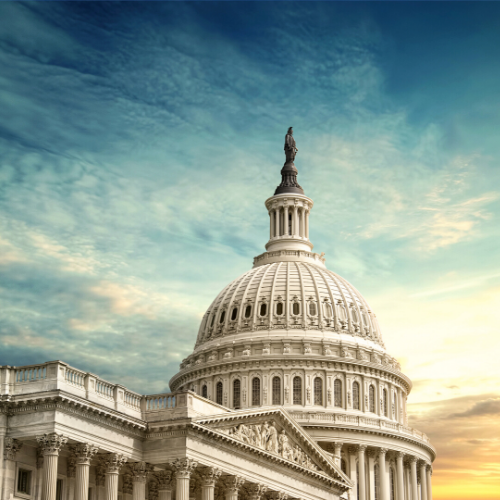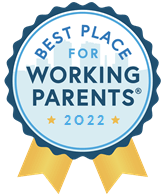How the New Stimulus Packages Can Help Your Business and Family

by Willie Cecil, Austin Young Chamber member, past Chair of the Economic Development Committee, and former Campaign Manager and Policy Analyst in the Texas House of Representatives.
Your health and the health of others is obviously the most pressing concern today, but many of you are undoubtedly worried about the economic impacts for you, your family, or your employer in the near future.
Luckily, there’s recent good news.
In the past few weeks the U.S Congress has passed three economic stimulus bills – now laws – in an effort to expedite healthcare system needs, curb business closures, provide enhanced unemployment benefits, and guarantee family and sick leave to people affected by the COVID-19 virus. These laws are unprecedented in their scope, costs, and benefits, and apply to both individuals and businesses alike.
Two laws are directly relevant to our continued economic success and the mitigation of financial catastrophe. Those two laws are called the Families First Coronavirus Response Act (FFCRA), and the Coronavirus Aid, Relief, and Economic Stimulus Act (CARES Act).
More details can be found below, but here’s a summary of the new benefits relevant to us and local business:
- Two weeks paid sick leave for COVID-19 related issues
- Up to 10 weeks of paid family leave for parents whose daycare or school has closed
- Tax credits to businesses for the paid leave
- $1200 one-time checks for all Americans with an annual income up to $100,000, scaled down at incomes over $75,000, with an additional $500 for each child
- $600 in additional unemployment benefits per week to anyone currently unemployed, underemployed, or who become unemployed in 2020
- 100% federally-backed loans for 250% of a business’ average monthly expenses, with 100% loan forgiveness possible, and available to even 1-person businesses
The full texts of these bills can be found here:
FFCRA: https://www.congress.gov/bill/116th-congress/house-bill/6201
CARES Act: https://www.congress.gov/bill/116th-congress/house-bill/748
Here’s a breakdown of the new laws:
The crux of this act is to both mandate and provide paid medical leave for up to two weeks to help prevent the virus’ spread if employees, or their relatives or significant others, begin exhibiting symptoms of COVID-19. It acts as an enhanced countermeasure to those who believe that they would otherwise need to work in order to pay their monthly expenses despite being sick. It also extends paid family leave to up to 10 weeks and also provides tax credits to offset those costs to businesses.
What FFCRA Means For Individuals:
You are now eligible for paid sick leave for 80 hours (10 working days) if you are salaried/full-time OR if part-time/hourly and working less than 40 hours, you are eligible for the average hours worked weekly for up to 10 working days. This leave can be taken in the following scenarios:
- You are subject to a federal, state or local coronavirus quarantine or isolation order;
- You are advised by a healthcare professional to self-quarantine due to coronavirus concerns (or you have contracted the virus);
- You are experiencing coronavirus symptoms and are seeking a medical diagnosis;
- You are caring for someone who has possibly contracted COVID-19
You will be eligible for 100% of your base pay in the first three conditions, and 66% of your base pay for the fourth.
This act also extends paid benefits to the FMLA (Family and Medical Leave Act) for primary caretakers of children whose daycare or school has closed indefinitely due to coronavirus concerns. In this case, you are eligible for up to 10 weeks of paid leave at the rate of 66% of your base pay. You will also have to have worked for your present employer for at least 30 days.
What FFCRA Means for Businesses:
In the short-term, small and medium sized businesses with less than 500 employees would be responsible for these payments as detailed above. These payments will be offset by a dollar-to-dollar reduction in tax liability when filing quarterly taxes via waivers of Federal taxes the employer would otherwise be responsible for, including: the employer’s portion of Social Security, company healthcare insurance payments, and Medicare taxes for the pay period of the employee’s sick leave.
Applicable credits for sick leave payments are limited to $511 per day per affected employee ($5,110 total for the 10 business day period) in cases where leave is mandated or taken for the employee to address their own health, or $200 per day ($2,000 total for the 10 business day period) if the leave is taken to address the health of another person.
Credits for family leave to care for a minor child whose school or daycare is closed are similarly $200 per business day, but are instead capped at $10,000 per applicable employee for up to the 10-week (or 50 business day) period.
Contractors or self-employed people may take advantage of these credits as well, and an exception to these paid sick leave payments can be made by a business with less than 50 people if they can demonstrate the sick leave would jeopardize the viability of the business.
The U.S Department of Labor is responsible for the rulemaking and compliance efforts and will provide guidance as it is established here, and a fact sheet on more specific questions can be found here.
This is the law with a whopping $2.2 trillion price tag, and carries with it a considerable amount of expanded programs and relief funds. There are a number of individual benefits for each working American, as well as a considerable increase to benefits paid to unemployed Americans, both of which I will detail later.
Of immediate importance, though, is the loan program to help businesses stay afloat and their employees employed. This is the $349 billion portion of the act allocated for what is being called the Payroll Protection Program, and it is very generous in its terms.
What CARES Act Means for Businesses:
This program is essentially meant to hit the pause button on your business expenses for 10 weeks with those loans being eligible for 100% loan forgiveness for employers that maintain pre-disaster employment levels through June 30th
These loans are also Federally-backed in their entirety, so there is essentially zero risk to any SBA-qualified lenders, which is the vast majority of US banks and credit unions. Here’s a breakdown:
- All employers with under 500 employees are eligible, including non-profits and even most 1-person businesses
- Benefits are measured by the average of monthly payroll costs and employee counts during either the February – June period of 2019, or the average of monthly payroll costs and employee counts during January – February of this year.
- The loan amount is 250% (2.5x) of your average monthly payroll costs, or $10 million, whichever is less.
- The definition of a “payroll cost” is intentionally broad. It includes: wages up to $100,000 annually per employee (divided monthly), rent, utilities, cash tips eligible for taxes, payments to contractors, PTO for vacation, parental, family, medical, or sick leave, pension or retirement account payments, group health coverage payments, insurance premiums, and State or local income taxes.
- At the end of eight weeks after accepting the loan, or by June 30th, your current employment levels are compared to the period used when determining payroll costs. If the employment level is equal to or higher than the period used in determining the loan amount, the loan is forgiven dollar-to-dollar. 1:1 ratio.
- If your employment level is less than the period used to assess your payroll costs, you are liable for the percentage difference on your loan (for example, if you employed 12 people on average from February – June in 2019, and then employ 10 people on June 30th of this year, you would be liable to pay back 17% of your loan amount and have 83% of it forgiven — representing 10 current employees divided by 12 employees)
- You may rehire employees laid off before these loans were available to more easily get to your needed employee headcount under this loan program. You will need to do so by June 30th.
- You may reduce wages up to 25% during the loan period without incurring a penalty, but will be liable for the full percentage equal to the percentage reduction in wages on your entire loan amount if the wage cuts exceed 25%. This is obviously optional, but available to you if it is desperately needed. The 25% cuts cannot put any employees below minimum wage.
- Absolutely no collateral or credit history comparable to the loan amount is needed
- Remaining unforgiven funds are deferred between 6-12 months, capped at 4% interest, and can have a repayment schedule of up to 10 years
Aside from not necessarily having anything for your employees to do currently, these loan terms are incredibly beneficial to small business owners and could save your business by offloading your fixed expenses. It’s especially useful if you’ve been forced to shutter. And if you are an essential business or can conduct business remotely, then all the better because you keep all of your revenue for the duration of the loan.
Of particular emphasis in this program: if you are a sole proprietor, independent contractor, self-employed, or otherwise conduct business requiring a 1099 for your taxes, YOU ARE ALSO ELIGIBLE for these loans.
For a 1-person business this is amazingly rare and can be a considerable windfall. As an added bonus, 100% of your loan will likely be forgiven – nearly by default – since you are the only person incurring business expenses or needing to be paid.
Contact your bank of choice as soon as possible to ask about these loans and what paperwork to submit when the funds become available: Your window of opportunity for these loans ends on June 30th. Additional information on the Paycheck Protection Program can be found here.
Other resources exist as stopgap measures such as the SBA Express Loan program, and the Economic Injury Disaster Loan program, which can also advance you up to $10,000 of that loan if it’s deemed necessary. Both of these programs have different requirements, and also different stipulations, if taking part in the PPP. All options should be explored if you are able to qualify.
Applications and details on the Express Loan and EIDL loan programs can be found here. Questions on the differences between those loans and the Payment Protection Program are detailed here, and a very useful one-sheet for the PPP can be found here.
Your banker can further inform you about the Paycheck Protection Program application process as the funds are opened up and the rules are established.
All individuals that are not claimed as dependents on recent tax returns are eligible to receive a one-time payment of $1200, plus an additional $500 per dependent such as your children. You will get the full amount if your annual salary is $75,000 or less, some portion of that amount for incomes between $75,000-$100,000, and no check if your income is higher than $100,000. Double those values if you file taxes jointly. The US Treasury Department is responsible for these payments and will determine eligibility from either your 2018 tax return, or your 2019 tax return if you have already filed it.
The IRS is likely to disperse payments via direct deposit if you receive(d) your tax return that way or, if you opted out of direct deposit, a physical check or debit card will be mailed later to the address listed on those returns. If you believe you need to change the address on file with the IRS, or would like to opt back in to direct deposit, in the coming weeks the Treasury Department plans to develop a web-based portal for individuals to provide their banking information to the IRS online. This will be the fastest way for individuals to receive payments, as opposed to waiting for checks in the mail. Updates will be given here.
If you are one of the unfortunate folks who have recently found themselves unemployed, or if you lose your job from here until December 31st, the Federal government has authorized the Department of Labor to give $600 per week in addition to State-allocated unemployment benefits for up to 13 weeks. It comes on top of any Texas unemployment benefits which can range from $69 to $521 per week, so a $600 enhancement is significant. State benefits can last up to 26 weeks, and an option to extend the Federal benefits for another 13 weeks to match the State benefit duration is available if an exceptional economic downturn prevents you from finding comparable employment.
The Texas Workforce Commission (TWC) is responsible for administering unemployment insurance. You can sign up for those benefits here, and there is now an expedited option to select if your unemployment was a direct result of COVID-19 concerns. (It most likely is.)
Do not try to call the TWC. They’ve been overwhelmed lately, and have shut off assistance via phone as of the time of writing. You would only get a message to sign up online, and a caseworker will call you if anything needs to be verified. Nearly all onboarding interviews have been suspended. UPDATE: A virtual-assistant debuted on April 1st on the TWC website. Do your best to utilize it and finish your application online. Phones are back to operational, but TWC is still experiencing more calls than can be handled in a day.
Once approved, it will take two weeks for you to receive your first benefits from the State. Once you start receiving those benefits, the Treasury Department will make the additional $600 weekly payments to you once the funds are released and available. You may apply for, and possibly receive, partial unemployment benefits from the State in cases where you are furloughed or experience a significant enough reduction in wages or hours to be classified as underemployed. The $600 enhancement in benefits would apply to you in this scenario as well. Additionally, for the first time ever, gig economy workers and sole proprietors who have lost their income can also qualify for unemployment benefits.
The one-time direct payment and extended unemployment benefits are assumed to be available or begin dispersing within the next three weeks according to Treasury Secretary Steven Mnuchin.
Further FAQ can be found in the $1200+ checks here, and updates on extended unemployment benefits will be posted here.
I hope all these resources are beneficial to you in one way or another, and hopeful that your recovery, economic or otherwise, is swift and uncomplicated. Stay safe, stay home, stay informed, and be kind to one another.
 Willie Cecil has been an Austin Young Chamber member for six years, past Chair of the Economic Development Committee, and former Campaign Manager and Policy Analyst in the Texas of Representatives. You can connect with Willie on LinkedIn here.
Willie Cecil has been an Austin Young Chamber member for six years, past Chair of the Economic Development Committee, and former Campaign Manager and Policy Analyst in the Texas of Representatives. You can connect with Willie on LinkedIn here.


